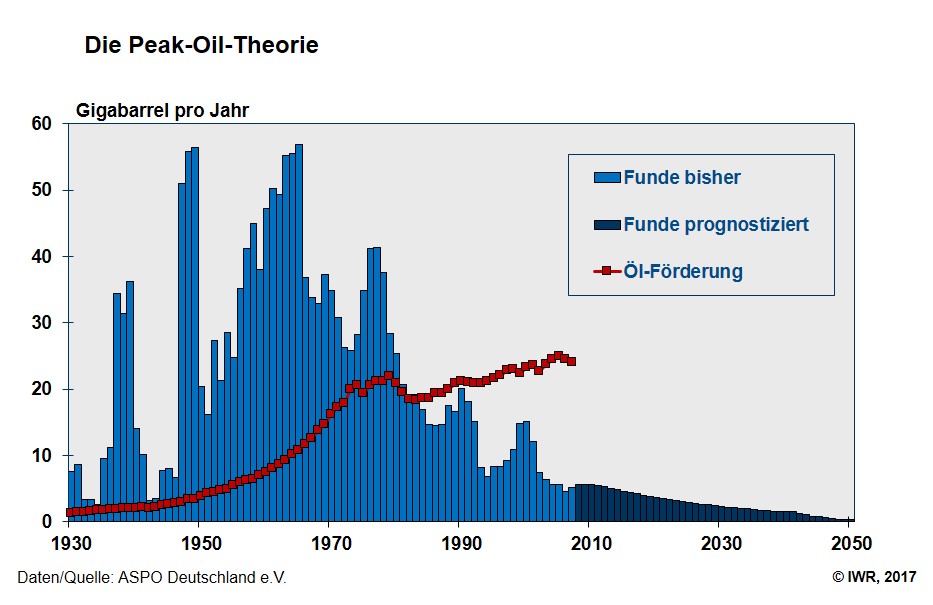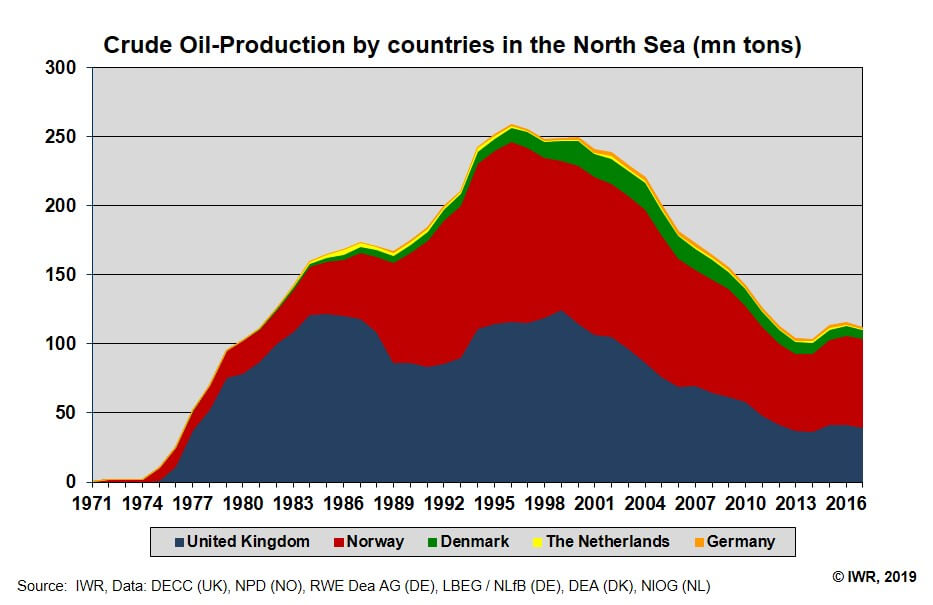There is still enough oil there, you can see it. According to predictions from the last century the oil should have been used up long ago.
Facts
Fact: With about 4.38 billion tonnes (t), global crude oil production is stagnating in 2016 at the previous year's level (2015: 4.36 billion tonnes) Individual oil fields such as those in the North Sea have, however, long since exceeded their production maximums, unnoticed by the public. It is rather rare to discover large new oil fields. It is necessary to bore to increasing depths to find oil. Newly discovered oil fields are often small and cannot replace the fields that have already been pumped empty.
1. Peak Oil Theory
The Peak Oil Theory from 1956 is attributed to the British geologist and BP oil expert Marion King Hubbert. The term Peak Oil was used to describe the time at which the oil production in a region, a country or the world reaches its maximum (red curve) and then reduces. Hubbert derived the Peak Oil Theory from the production history at individual oil fields and transferred it to crude oil production in North America and around the world. Because of the increasing development of unconventional oil (oil shale, shale sand etc.) the Peak Oil point cannot yet be predicted for global oil production.

2. Peak Oil exemplified by crude oil production in the North Sea – maximum production was already achieved in 1996 – production decline faster than expected
The Peak Oil Theory for an entire production region can be tracked very well using the example of crude oil production in the North Sea. Production of North Sea oil already reached its production maximum in 1996 with annual production of approximately 260 million t. In 2013 crude oil production reduced to the lowest level for 35 years at 104 million t. That is equivalent to a fall of more than 7 per cent from the previous year (2012: 112.4 million t). With 112.1 million tonnes, the oil production in the North Sea in 2017 has stabilized somewhat. However, this does not mean, that a fundamental break of the decline-trend in oil production can be recognized.
If this rate of decline continues the production of North Sea oil should be insignificant ten years from now. New production techniques and undiscovered oil fields cannot change this. The search for new oil fields in the North Sea is in full swing but experts are not expecting to find any more large fields given the amount of drilling that has already been carried out.

3. When will global crude oil production reach the Peak Oil point? – The production of crude oil is getting increasingly technically complex
The shape of the production curve for individual oil fields and for oil production regions such as the North Sea can also be transferred in principle to the global production of crude oil. It is, however, unclear when world production will exceed its maximum. In particular economically prospering emerging nations such as China and India are ensuring a further increase in the world’s demand for crude oil. In 2016, crude oil production is stagnating at 4.38 billion tonnes (2015: 4.36 billion tonnes) compared to 2015. The successive decline in the production quantities at individual oil fields and production regions and the comparison to substantially smaller new discoveries do, however, make it clear that it will be increasingly difficult to satisfy demand. Increasingly complex technical processes are therefore being used to develop new oil reserves. To do this the oil industry is penetrating to ever increasing depths to develop oil fields under the ocean floor. Besides costs this increase in technical complexity also entails an increase in safety risks. In view of possible effects on the environment alternative exploration processes such as the extraction of oil from shale sands are also meeting with international criticism.
Links
1. Less oil: North Sea oil extraction falls in 2011 to lowest level in 30 years, IWR press release, 08.09.2012
2. Sustainable Guernsey: North Sea crude oil extraction falls in 2011 to lowest level in 30 years
© IWR 2024
All rights reserved
Reproduction only with permission of IWR / IWR.de GmbH



